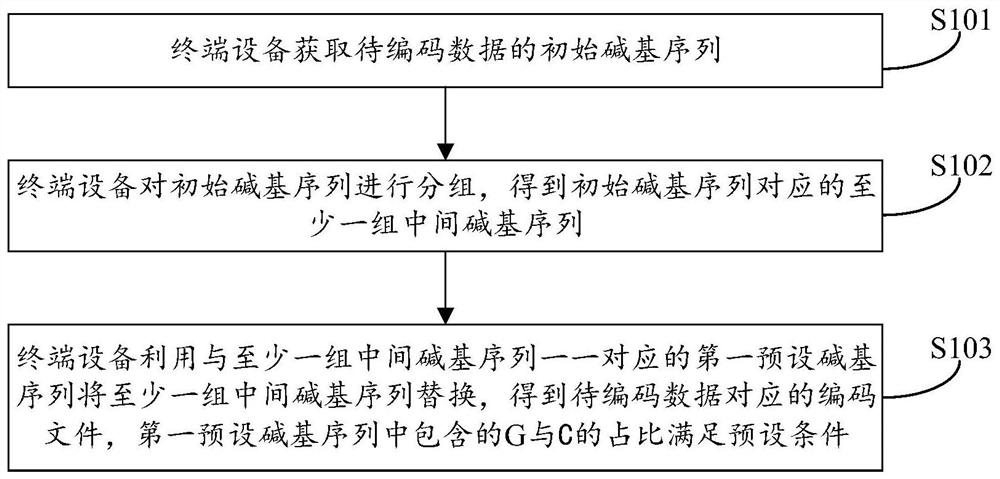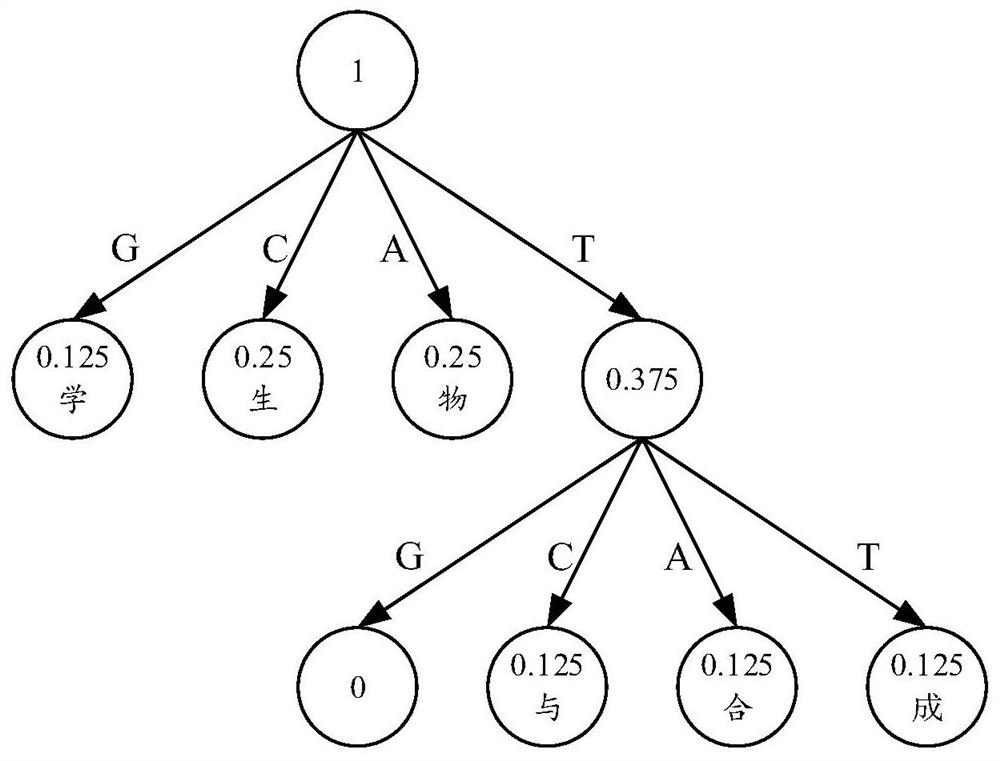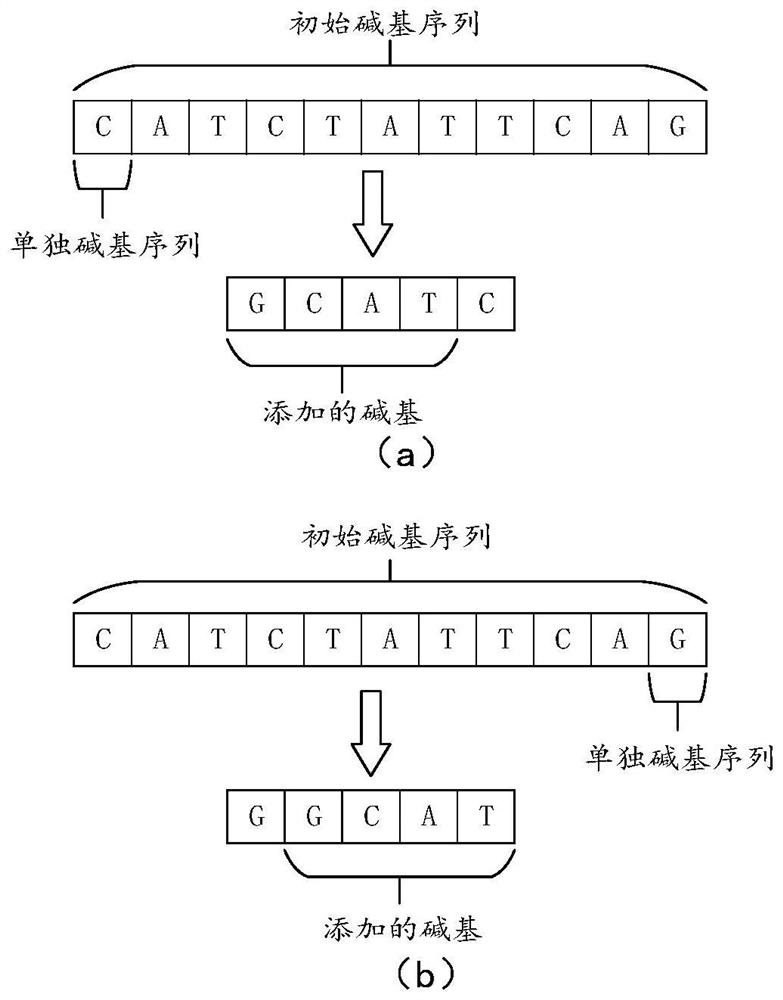Encoding method and device, decoding method and device, terminal equipment and readable storage medium
An encoding method and technology for encoding data, which are applied in the field of computer-readable storage media and can solve the problems of expanding the application scope of DNA storage technology and increasing the probability of errors.
- Summary
- Abstract
- Description
- Claims
- Application Information
AI Technical Summary
Problems solved by technology
Method used
Image
Examples
Embodiment 1
[0085] see figure 1 , figure 1 A schematic flowchart of the encoding method provided by Embodiment 1 of the present application is shown. Such as figure 1 As shown, the method may include:
[0086] S101. The terminal device acquires the initial base sequence of the data to be encoded.
[0087] Wherein, the data to be encoded may be data in any format, such as text, numbers, and so on. In the embodiment of the present application, the terminal device can encode the data to be encoded in any format according to any existing encoding method to obtain the initial base sequence of the data to be encoded, which is not specifically limited in the embodiment of the present application.
[0088] In order to make the final encoded file have a shorter base sequence, to improve the encoding efficiency and reduce the cost of DNA storage, the terminal device can treat the encoded data through the four-fork Huffman encoding (that is, the four-ary Huffman encoding) method Encoding is per...
Embodiment 2
[0125] see Figure 8 , Figure 8 A schematic flowchart of the decoding method provided in Embodiment 2 of the present application is shown, as shown in Figure 8 As shown, the method may include:
[0126] S801. The terminal device acquires a file to be decoded, where the file to be decoded is a file encoded based on the encoding method described in Embodiment 1 above.
[0127] S802. The terminal device performs base restoration on the file to be decoded to obtain an initial base sequence corresponding to the file to be decoded.
[0128] S803. The terminal device decodes the initial base sequence to obtain decoded data corresponding to the file to be decoded.
[0129] Specifically, the terminal device can first obtain the second preset base sequence in the file to be decoded, and use the repeated bases corresponding to the second preset base sequence to replace the second preset base sequence to obtain the file to be decoded Corresponding target base sequence. Then, the te...
Embodiment 3
[0143] Corresponding to the encoding method described in Embodiment 1 above, Figure 10 Shows the structural block diagram of the encoding device provided by Embodiment 3 of the present application. For the convenience of description, Figure 10 Only the part related to Embodiment 3 of the present application is shown in .
[0144] refer to Figure 10 , the encoding means can include:
[0145] An initial sequence acquisition module 1001, configured to acquire an initial base sequence of the data to be encoded;
[0146] A sequence grouping module 1002, configured to group the initial base sequences to obtain at least one set of intermediate base sequences corresponding to the initial base sequences;
[0147] An encoding module 1003, configured to replace at least one set of intermediate base sequences with a first preset base sequence corresponding to at least one set of intermediate base sequences to obtain an encoding file corresponding to the data to be encoded , the rat...
PUM
 Login to View More
Login to View More Abstract
Description
Claims
Application Information
 Login to View More
Login to View More - R&D
- Intellectual Property
- Life Sciences
- Materials
- Tech Scout
- Unparalleled Data Quality
- Higher Quality Content
- 60% Fewer Hallucinations
Browse by: Latest US Patents, China's latest patents, Technical Efficacy Thesaurus, Application Domain, Technology Topic, Popular Technical Reports.
© 2025 PatSnap. All rights reserved.Legal|Privacy policy|Modern Slavery Act Transparency Statement|Sitemap|About US| Contact US: help@patsnap.com



